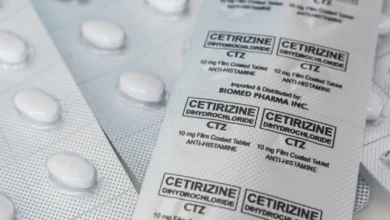Cost shocker: rehab in India vs U.S.—why international patients save big without cutting care

Comparable inpatient addiction treatment in India typically costs a fraction of U.S. rates in 2025, and the gap reflects lower overheads and operating models rather than reduced clinical standards or fewer therapy hours. For patients comparing a rehabilitation centre in Mumbai with mainstream facilities in the United States, the difference often spans several thousand dollars per month for similar programme lengths and multidisciplinary care.
The U.S. price reality in 2025
In the U.S., a standard 30‑day inpatient programme commonly runs between $10,000 and $30,000, with higher‑end or longer‑stay options rising well beyond that range depending on amenities and clinical intensity. Several national guides place “typical” 30‑day costs near $14,000–$27,000, while premium centres can charge $50,000 or more per month for private rooms, concierge services, or luxury tiers. Daily‑rate breakdowns also show per‑day charges that translate to $5,000–$30,000 per month for mainstream inpatient care, with complex cases and longer programmes crossing $60,000 in total. Even where insurance applies, deductibles, co‑pays, exclusions, and out‑of‑network bills can keep out‑of‑pocket exposure high for many families.
India’s cost window—what people actually pay
Across India, published cash‑pay ranges for inpatient rehab commonly fall around ₹20,000 to ₹1,50,000 per month for mainstream programmes, with premium offerings priced higher based on privacy, therapist density, and medical supervision. For international packages, countrywide guides list all‑inclusive pricing estimates around $4,500 to $8,000 per month, with city hubs like Mumbai publishing mid‑ and upper‑tier menus spanning roughly ₹1.5 lakh to ₹6 lakh per month depending on room type and inclusions. The headline difference matters: even at Mumbai’s premium end, monthly tariffs often sit below U.S. inpatient averages, while mainstream Indian programmes remain far lower in absolute outlay. That pricing persists across many metros because staffing, facility costs, and procurement operate on a lower cost base without erasing clinical oversight or therapy breadth.
See also: Discover Miami’s Premier Approach to Healthy Skin & Rejuvenation
Why the savings do not mean less care
International patients typically receive structured detox (when indicated), psychiatrist reviews, individual psychotherapy, group work, family sessions, sleep and nutrition protocols, and stepped aftercare—all integral to evidence‑based rehab—within India’s lower cost bands. The price gap reflects wage, facility, and non‑clinical overhead differences rather than a switch from medical to non‑medical programmes, which is why families often see similar clinical touchpoints itemised in both countries’ quotes. Medical tourism analyses repeatedly attribute India’s healthcare affordability to systemic efficiencies and scale, not to curtailed standards, with savings often reported in the 30%–70% band versus Western markets for comparable care. For those seeking the best rehab centre in India on a value‑per‑dollar basis, that combination of clinical depth and steady governance is the core attraction, particularly in top‑tier metro hubs.
The Mumbai advantage for international patients
Mumbai remains a preferred gateway due to dense clinical networks, robust flight connectivity, and a wide spread of inpatient and outpatient options that can be sequenced into a stepped plan after discharge. City‑specific tariff snapshots make budgeting more predictable: published bands of roughly ₹1.5 lakh to ₹6 lakh per month map clearly to room categories, therapy hours, and 24/7 nursing levels, which helps families compare like‑for‑like inclusions. For anyone considering rehab in Mumbai, that transparency shortens decision time and reduces back‑and‑forth on what is, and is not, included in the monthly quote. Outpatient therapy availability at multiple price points also makes it easier to continue care locally or via tele‑follow‑ups after an inpatient phase, supporting adherence once travel ends.
Practical cost comparison at a glance
A typical U.S. 30‑day inpatient quote of $10,000–$30,000 equals roughly ₹8.3 lakh–₹25 lakh at current broad conversions, before any add‑ons for private rooms or luxury tiers. By contrast, many India packages list $4,500–$8,000 per month for international patients, with Mumbai premium tiers commonly ₹1.5 lakh–₹6 lakh per month, even when private rooms and expanded therapist time are included. Luxury outliers exist in both markets, but Indian premium pricing often stays below equivalent international luxury levels, widening savings for those seeking privacy and one‑to‑one models. The end result: a high‑structure month in India can cost less than a mid‑market month in the U.S., particularly when comparing similar programme lengths and clinical touchpoints.
Planning pointers that protect the budget
Always request line‑item inclusions—detox (if needed), labs, pharmacy, psychiatrist consults per month, guaranteed individual therapy hours, family sessions, aftercare visits, and room category—so quotes can be matched like‑for‑like across shortlists in India and the U.S.. If Mumbai is the target, shortlist two or three providers at different price points, then calibrate around supervision level and therapist density rather than décor, because these are the variables most tied to outcomes and price. For international travel, align arrival dates with clinical assessment and detox timing to reduce idle days and accommodation overlap, which can erode savings if not planned well. Where visas are required, the e‑Medical route and standard documentation streamline entry for treatment, keeping the administrative path predictable for patients and companions alike.
A direct path to care and clarity
For families comparing options now, Mumbai offers the scale, clinical depth, and transparent pricing needed to move quickly from enquiry to admission without compromising standards of care. Those searching phrases like rehabilitation centre in Mumbai or best rehab centre in India typically want two things: a clear, written plan and a firm monthly number that covers the essentials with no surprises, both of which are easier to secure when inclusions are itemised upfront. If proximity matters after landing, refining a rehab in Mumbai shortlist by suburb and travel time helps ensure family sessions and follow‑ups stay consistent, which is critical for continuity and relapse prevention. Taken together—lower monthly outlay, multidisciplinary care, and steady aftercare—India delivers an uncommon value equation for overseas patients ready to begin structured recovery now, not months later.rh




